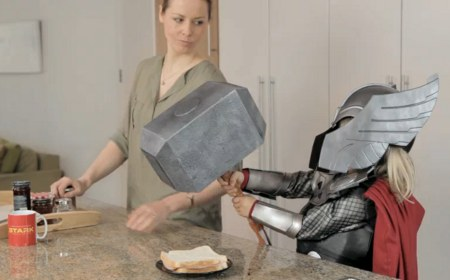Virality. Many brands want to go viral, but it’s more of a mystery to create viral content in a digital age where the most unpredictable content can reach millions of views overnight. There is no secret recipe for the perfect viral video, and yet there are videos that receive millions of views every year. What’s the secret?

![]()
Unfortunately, virality is more of an art than a science. While there is no tried-and-true formula for virality, there are some elements that we consistently see — and knowing what that puts you one step closer to attaining that viral glory.
So let's identify some of the commonalities that can make them internet-famous.
The Science of Virality
From the latest trending Twitter or TikTok moment to some of the oldest viral moments to come from YouTube, like “Keyboard Cat” or “Charlie Bit My Finger,” the science of a viral video is an ever-changing imperfect formula.
How do videos go viral?
While for YouTubers of today, it may take a lot of luck, some common elements of viral videos can set you up for success. According to HubSpot research in the 2022 Video Marketing Report, these are the most prevalent characteristics:
- Title length: Videos had short titles (3 words or less)
- Run-time: Videos had shorter run times (3 minutes or less).
- Captures viewer's attention in first few seconds: Videos featured the element of surprise (defined as seeing or hearing an expression of surprise, such as a scream or gasp) or interesting propositions breaking of norms.
- Content is relatable in nature: Videos featured relatable circumstances, situations or subject matter that viewers of multiple different backgrounds could relate to.
- Production quality: Videos displayed a musical elements reflecting high production value in resolution, props, and well-thoughtout ideation.
- Talent: Many viral videos were composed of songs, dances, or performances that required practice and talent.
The Art of Viral Videos: Applying Data to Real-Life Scenarios
The Marketing Report also includes survey data marketing professionals about which factors are most effective for creating viral videos, the most commonly cited characteristics are as follows:
- Short and concise title (3 words or less) and run-time (3 minutes or less)
- Uses engaging story-telling format
- Invokes pleasant emotions like laughing
- Involves elements of irony or surprise
- Allows participation to be made public
- Is practically useful
You can translate this list to craft a unique, viral message representing your brand, and we’ll give you our take on how to tap into each.
And while some of these items (like a short title and run-time) are self-explanatory. But others (like story format, elements of irony and surprise, public indicators of participation, and practical use) may need to be more evident, so here are some tips for addressing these more complex factors.
1. Tell a Story
Since the beginning of language, humans have been programmed to consume stories. Stories influence our thinking and provide sensory experiences. Because of these responses, people are attracted to content in a conventional story format.
Ensure you have the traditional elements of a narrative (beginning, character, conflict, climax, and resolution) present in your video, and your viewers will identify it as a story.
You could also experiment with using well-known tropes in your video — for example, you can convey an idea through a common tale like a pirate story to simplify what it’s like to use a “Smooth CRM for Rough Seas” like HubSpot:
The ad narrates how giving our CRM platform to characters, such as pirates, would alter their stories and help them find the treasures they're looking for. This kind of video is a cute, funny way of incorporating that theme while still focusing on the brand's mission.
2. Be Ironic
Irony is among the most common factors among viral videos at an astounding 90% of surveyed videos. That makes it a high priority when crafting your viral message.
How do you incorporate irony? You do what the majority of the sample videos did — demonstrating the breaking of social norms.
Think: Are there any social norms associated with your brand or product? Can you break one of those relevant norms in an ironic yet on-brand way?
Let's take a look at an example. Marvel published a brilliantly ironic video for the release of Thor in 2011. Called “Little Thor,” the video is a parody of the adorable Volkswagen Super Bowl commercial that starred a little boy dressed as Darth Vader trying to harness the power of the force.
In “Little Thor,” a girl dressed as Thor is going around the house, trying to use Thor’s hammer to wield great power on the dog (appropriately named Loki), a doll, and her peanut butter and jelly sandwich.

As we watch this, it’s practically identical to the Volkswagen commercial, and we assume it’s probably another video in the same series. Ultimately, the father comes home, and she runs outside for one last attempt with her hammer. We assume that her father will sound the car’s alarm, just as the father did in the VW Super Bowl commercial, but instead — the car explodes! We then realize this commercial is not for Volkswagen but for the upcoming Thor movie.


This video is ironic on multiple levels. First, it’s an ironic parody of a popular ad. Second, the child dressed as Thor is a girl, which goes against gender stereotypes (and breaks a social norm). Third, the car explodes, which is ironic since the video is a spoof of a car commercial.
An ironic video like that is a humorous way to introduce people to your brand personality.
3. Surprise the Audience
Half of the viral videos contained an element of surprise.
Why do people like to be surprised? In a world where we view thousands of ads daily, people are tired of seeing the same things repeatedly. A surprise is a nice, refreshing change of pace to all that monotonous content.
So how do you incorporate elements of surprise while still making your video relevant to your company?
Your company should be the surprise.
More specifically, your company's benefits should be the (pleasant, funny, cheerful, etc.) surprise element to your video.
Take the iconic Old Spice commercial, “The Man Your Man Could Smell Like,” video campaign. It’s an excellent example of using a surprise element to exaggerate the benefits of their body wash in a fun, ironic way.
The ad features a towel-clad actor in a bathroom with the shower running behind him. He says that, while your man is unfortunately not him, your man could smell like him with Old Space body wash. Then suddenly, the shower backdrop is pulled right out from behind him to reveal that he is on a boat! This story continues with constantly changing wardrobe, props, and backgrounds.
Viewers are constantly surprised and excited to see what “the man your man could smell like” will do next.
While not every brand has the budget to do a video like Old Spice, think about how you can surprise your audience in small and big ways — it could help your video get shared.
4. Encourage Sharing
Berger said that people are more likely to participate if they can publicly indicate their participation. Why? Because people like to show off and feel like they’re in the know.
It’s easy for people who interact with you in person — a branded t-shirt, bumper sticker, or pen will do the job just fine. But it’s harder to provide public participation indicators for people who interact with you online.
Correction: it was harder to provide them before social media came around.
Nowadays, social sharing buttons are on practically every form of online content: YouTube videos, website articles, audio clips, etc. This allows people to share the content they enjoy with their friends, who can then share it with their friends, etc.
By incorporating social sharing buttons on your videos and wherever you end up hosting them, you meet your audience’s need to share their experience with others.
5. Think Practicality
The two things we all have in common are that we all have problems, and we’re all looking for solutions to fix them.
People always search for informational content, from headache remedies to looking up recipes for a last-minute potluck dinner. Chances are, your customers are also looking for information regarding your field or industry. And it’s in your best interest to provide it for them.
By creating a practical, useful video, you accomplish a few essential things:
- You provide information to people who prefer to seek it on their own.
- You can encourage those people to share that information with their networks (accommodating those seeking advice from their friends).
- You establish yourself as a helpful tool and source of information, increasing trust (and hopefully loyalty).
- If you have strategically placed calls to action in your video, you can convert viewers to the next stage of the buying journey.
Can your video provide practical information that your customers might be looking for? A good first step is to identify a problem your customers are having and provide information on how they can fix it.
Maybe you sell makeup, and you have a lot of customers who aren’t sure how and when to apply it — you could create a how-to video for tips and tricks to apply makeup. Or maybe your company provides eye exams, but many first-time children are scared of the visit — you could film a tour of your office, with a step-by-step explanation of the eye exam for mothers to show their children.
By providing this helpful information, you help people associate you with solutions — which come in handy when they want to buy something down the road.
Take Pillsbury’s video for “Crescent Mummy Dogs,” for example. It’s an instructional video that shows how you can make a fun, playful dish for your children at Halloween. Parents might be searching for a recipe like this for their child’s school party, and Pillsbury has provided the recipe and a how-to video to accompany it. This way, they make completing this recipe as easy as possible, so parents who try it love it and will be more likely to share it with their friends — and heck, maybe even buy Pillsbury dough to make the recipe.
Set Your Next Video Up for Success
There’s no magic formula for the perfect viral video — but there are some general guidelines to help get you there. By understanding the elements that make content successful, you can predict (and even create) the content that will become popular. It’ll allow you to create videos that are more likely to be widely distributed online strategically.
Editor’s note: This post was originally published in June 2014 and has been updated for comprehensiveness.
![Download Now: The 2024 State of Social Media Trends [Free Report]](https://no-cache.hubspot.com/cta/default/53/3dc1dfd9-2cb4-4498-8c57-19dbb5671820.png)

![6 Short-Form Video Trends Marketers Should Watch in 2024 [New Data]](https://blog.hubspot.com/hubfs/ft-short-form-video-trends.webp)





![How to Write a Video Script [Template + Video]](https://blog.hubspot.com/hubfs/video%20outline.png)


